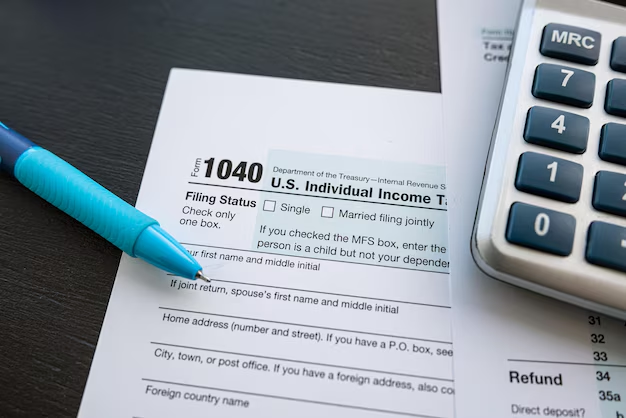Understanding the Difference: W-2 vs. 1040 Forms
Navigating the world of taxes can often feel overwhelming, especially when faced with a slew of form numbers and tax jargon. Among the most common questions that arise during tax season is the confusion between a W-2 form and a 1040 form. If you’re one of the many wondering, “Is a W-2 a 1040?” you’re not alone. Let's explore these integral components of the U.S. tax system and unravel their individual purposes.
📈 What is a W-2 Form?
The W-2 form, officially known as the Wage and Tax Statement, is a tax form used in the United States to report wages paid to employees and the taxes withheld from them. Employers are required to issue a W-2 form to each employee by the end of January for the previous year.
Key Features of a W-2
- Employer Details: Includes information about the employer, such as name, address, and employer identification number (EIN).
- Employee Details: Contains employee's name, social security number, and address.
- Income Information: Reflects total wages, salaries, and tips, along with federal, state, and other taxes withheld.
- Additional Benefits: May include details about health insurance coverage, retirement plan contributions, and other job-related benefits.
Why is the W-2 Important?
A W-2 form is essential for preparing your tax return. It provides crucial information about your income and tax withholdings, which determine whether you receive a tax refund or owe additional taxes. Without it, filing your taxes accurately becomes challenging.
📄 What is a 1040 Form?
The 1040 form is a standard IRS tax form that individuals use to file their annual income tax returns. It provides a comprehensive summary of all taxable income, deductions, credits, and ultimately calculates whether you owe the government or are entitled to a refund.
Types of 1040 Forms
- Form 1040: The standard version used by most taxpayers.
- Form 1040-SR: Tailored for taxpayers aged 65 or older, featuring larger text and simplified layouts.
- Form 1040-NR: For nonresident aliens who have U.S. income to report.
What Information Goes on a 1040?
- Personal Details: Name, address, and social security number.
- Filing Status: Single, married filing jointly, married filing separately, etc.
- Income Details: Information from W-2 forms, other income sources like investments or self-employment.
- Adjustments: Items that reduce taxable income, such as IRA contributions or student loan interest.
- Tax Credits and Deductions: Items like the Child Tax Credit or mortgage interest deduction that lower the tax liability.
Importance of the 1040 Form
The 1040 form acts as the main document to calculate your annual tax obligation. It considers all aspects of your financial life to ensure you’re reporting the appropriate amount of income and paying or receiving what you rightfully should.
🤔 How the W-2 and 1040 Fit Together
While distinct, the W-2 and 1040 forms are connected parts of the tax process:
- W-2 as Input: The W-2 form provides input data for completing the 1040 form. It details the exact wages earned and taxes withheld, which are needed to accurately fill out the 1040.
- Filing Requirement: Both are essential for tax filing; the W-2 is used to report data, while the 1040 is used to calculate tax liabilities and refunds.
- Timelines: Employers send W-2s by January's end, and taxpayers use them to file 1040 by the April 15th deadline (or later if an extension is filed).
📚 Related Subtopics for a Deeper Understanding
Reporting Other Income
A W-2 covers employment income, but what if you have additional sources of income? That's where other schedules and forms come into play:
- Schedule C: For reporting income or loss from a business you operated or a profession you practiced as a sole proprietor.
- Schedule D: For reporting capital gains and losses.
- Form 1099: Used for various types of freelance, contracting, or investment income not covered by W-2.
Understanding Deductions and Credits
Knowing the difference between deductions and credits can significantly impact your tax return:
- Deductions reduce your taxable income. Examples include student loan interest, IRA contributions, and mortgage interest.
- Credits directly reduce the amount of tax you owe. Examples include the Earned Income Tax Credit (EITC) and Child Tax Credit.
Common Tax Filing Challenges
Some taxpayers encounter hurdles such as:
- Receiving Multiple W-2s: When working multiple jobs, ensure all W-2s are accounted for in your 1040.
- Corrections: If a W-2 is incorrect, request a corrected form (W-2c) from your employer.
- Lost W-2s: Request a copy from your employer or use Form 4852 as a substitute if necessary.
✅ Quick Summary: Essential Takeaways
Here's a concise breakdown of key points about W-2s and 1040s for easy reference:
📝 W-2 (Wage and Tax Statement):
- Reports wages and taxes withheld.
- Provided by employers to employees annually.
📄 1040 (U.S. Individual Income Tax Return):
- Summary document used to file annual income tax.
- Covers total income, deductions, and credits.
🔗 Connection: W-2 provides data for 1040 completion.
🚨 Filing Tip:
- Always compare your final tax return with your W-2 to ensure accuracy and reduce the risk of errors.
In conclusion, while the W-2 and 1040 are distinct forms, they work together seamlessly in the tax filing process. Understanding each one’s role will empower you to navigate tax season with confidence, ensuring you file accurately and potentially maximize your tax benefits. Whether you’re a seasoned filer or new to tax preparation, recognizing these forms' importance is the first step toward a stress-free tax experience.
